From the city center of Cao Bang you need to travel the 110km journey to reach Ban Gioc. The distance is pretty long but it is made up by the scenic landscape over the mountains.
Ma Phuc Pass
Ma Phuc Pass rises to the elevation of 700m above the sea in an area that used to be a “pillow basalt” landscape at the sea bottom hundreds of million years ago. Lava errupted from underwater volcanoes was quickly cooled down by sea water to form lumps of pillow-shaped basalt rocks.

The meaningful geological value of the findings at Ma Phuc Pass in reality is much attractive to reseachers and those who has much interest in geology. In the eyes of a regular tourist this is more a road side stop to have a view over the lower plain. The stop is located at Km296 on Route 3 at 21km from Cao Bang.
Phia Thap Village

Neighbor to the bladesmith village of Pac Rang, Phia Thap village also lies in the middle of a flat valley full of paddy patches. Only when coming close you realize that beside rice cultivation, the villagers is maintaining a multi centuries old craft of making incense sticks. The craft was brought to the Nung people in Phia Thap during long periods of historical contacts with the Vietnamese. Phia Thap is a local village where the old tradition of making incense is maintained till present day. The turn off into the village is located on Km302+700 on Route 3. Phia Thap with over 50 homes lies on the south side of Route QL3 with the 500 metre main path leading though till the back of the village at the foot of the back hill. Stroll around the village to take in the peaceful atmosphere among the scenic sight of rice paddies (best in September). You can pop in any house and ask to help with the incense making. The entire processes takes time and skills but certain parts are easy to get a hands-on experience.
Pac Rang Village
Pac Rang is one of the villages of the ethnic Nung people in Phuc Sen Commune which are famous for the tradition of making blades. This tradition dates back to the 11th century during the insurrection led by Nung Tri Cao against both Vietnamese and Chinese imperial courts. Nung Tri Cao brought many blacksmith families together in Phuc Sen to make swords and weapons for his army.
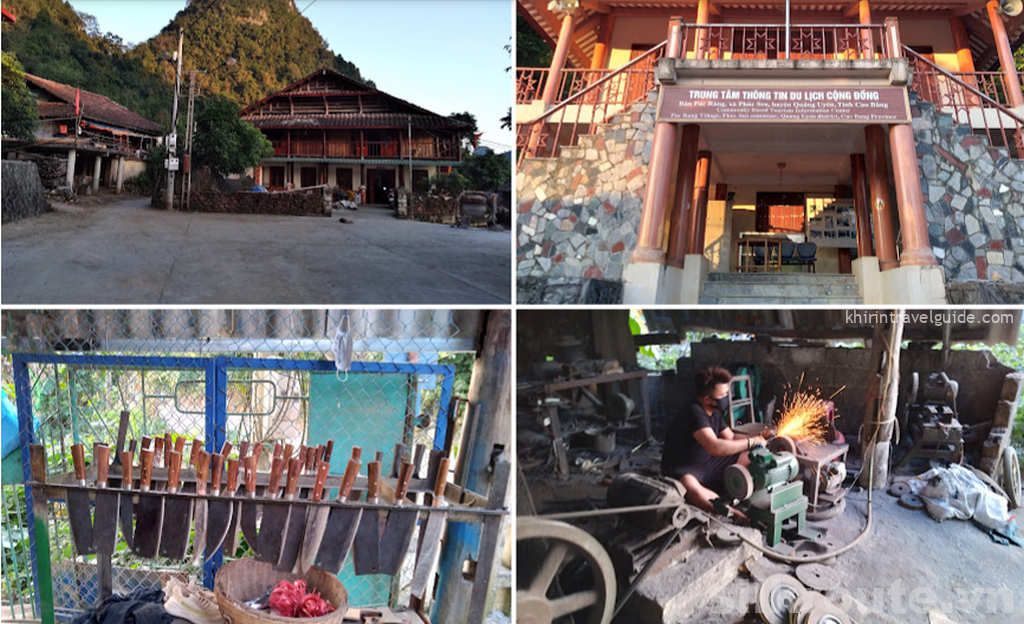
The village today is home to 400 families, half of which continue the production of blades. From very early in morning till end of afternoon the village is filled with noise from metal grinding and hammering which makes it imporper to stay overnight. However the village is scenically surrounded by vast stretches of paddy fields. From the main street turn into the village gate and go straight for half a kilometer when you see the tourist information house. Leave your bike at the front yard and start your exploration on foot.
Ban Gioc Waterfalls
Widely agreed most beautiful waterfall in Vietnam. Ban Gioc on Quay Son River is agreable by many the most beautiful waterfall in Vietnam. From the city center of Cao Bang you need to travel the 110km journey to reach Ban Gioc. The distance is pretty long but it is made up by the scenic landscape over the mountains.
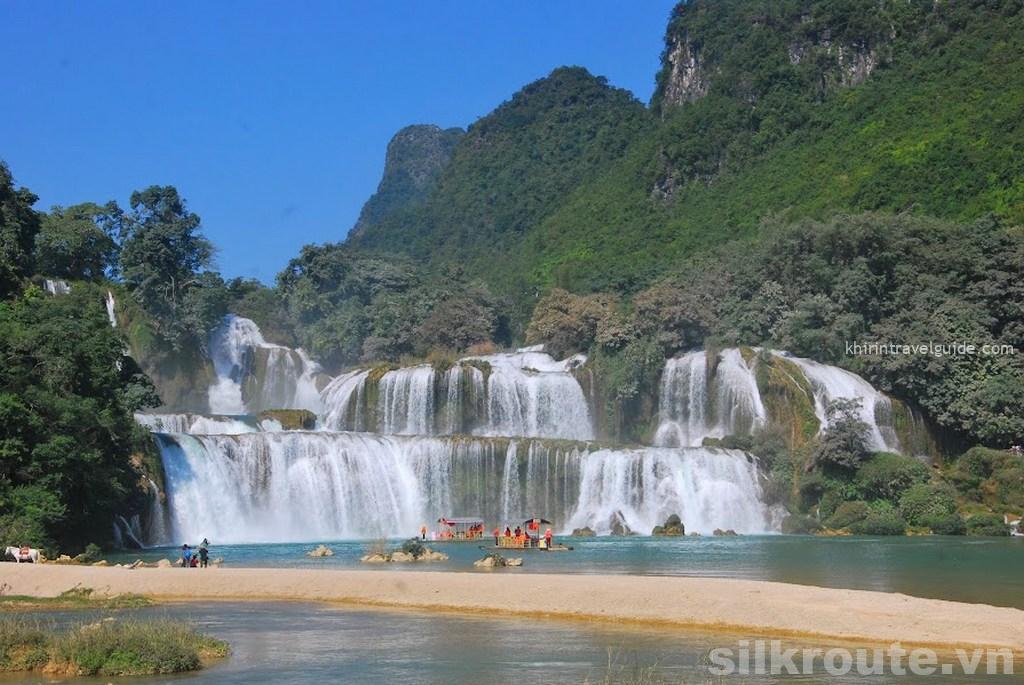
Once arriving at the Border Station of Ban Gioc, follow the dirt road going down the slope toward the parking, you will find the ticket booth right there. You can see the fall from here but you still need to walk for about 200m to reach it. Measuring 53 m in height and 300 m across the fall comprises multiple cascades which attribute to its beauty. Quay Son River is also the natural border between Vietnam and China. While the landscape is pretty flat on Vietnam’s side, it is huge steep mountains on China’s side. You can see the the long multi-section stairway and elevator leading from the ridge down to the fall on China’s side. On both sides, there are raft service providing an opportunity to get into the arm reach distance to the cascades. The boatmen then need to make sure the raft doesn’t cross over to the other half of the river.
Nguom Ngao Cave
Nguom Ngao is a famous stalagtite cave in Cao Bang located about 3 km away from Ban Gioc waterfal. The ticket booth is located at the parking and the check point is right before the entrance of the cave. You only go one way through the length and exit the cave before taking the short path to return to the ticket point.
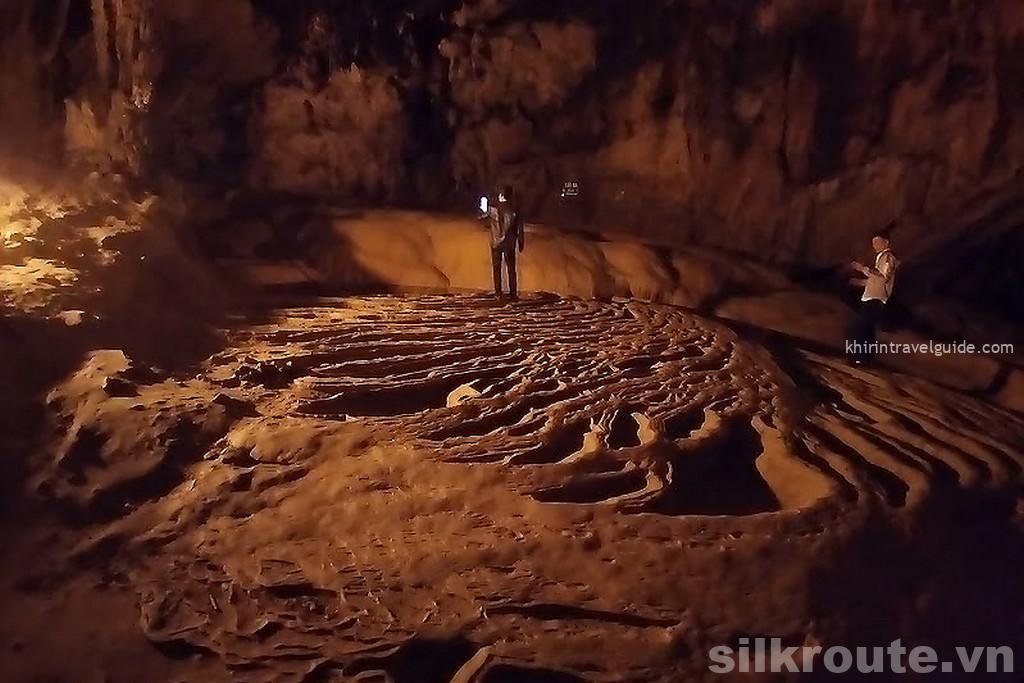
When going in, the first part does not seem to be much of impression but the more you go in the more you find out. There are huge chambers inside featuring spectacular stalactites and stalagmites with adequate light bulb illumination. Highlight spots of the cave include the stalactite of called “The Stone Lotus” and “The Silver Tree”.
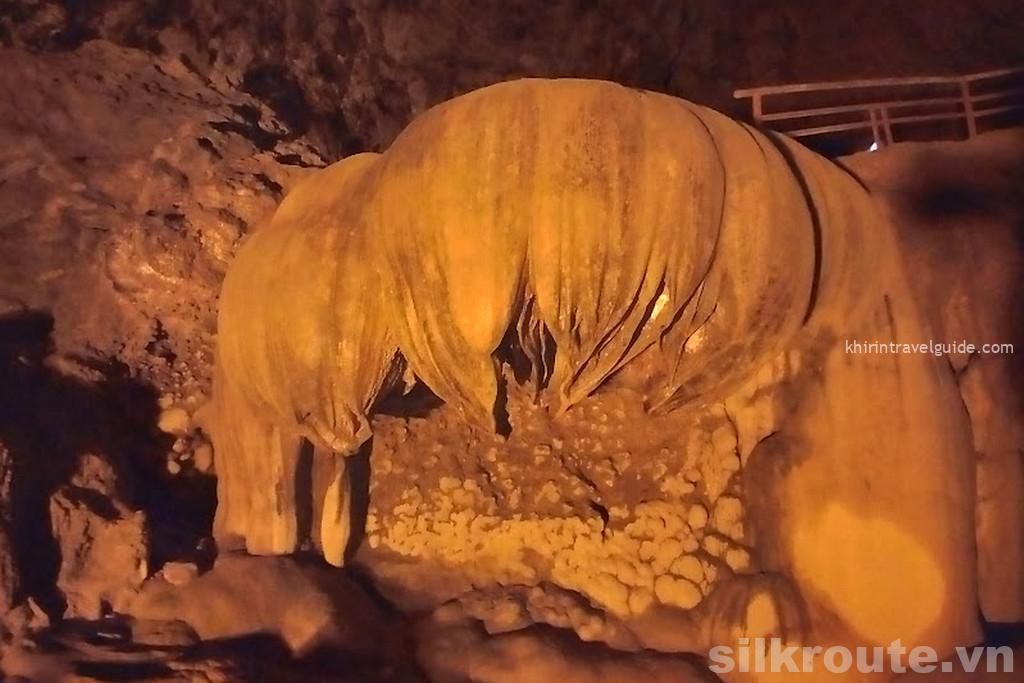
There are a few places where the passage is only Có một số đoạn thấp chừng 1m high, you need to bend to go through. There are other places where water is dripping, testifing for the on going proccess of stalactite formation, however, it may be slippery there. Be sure to carry a flashlight with you and don’t miss the this amazing place.
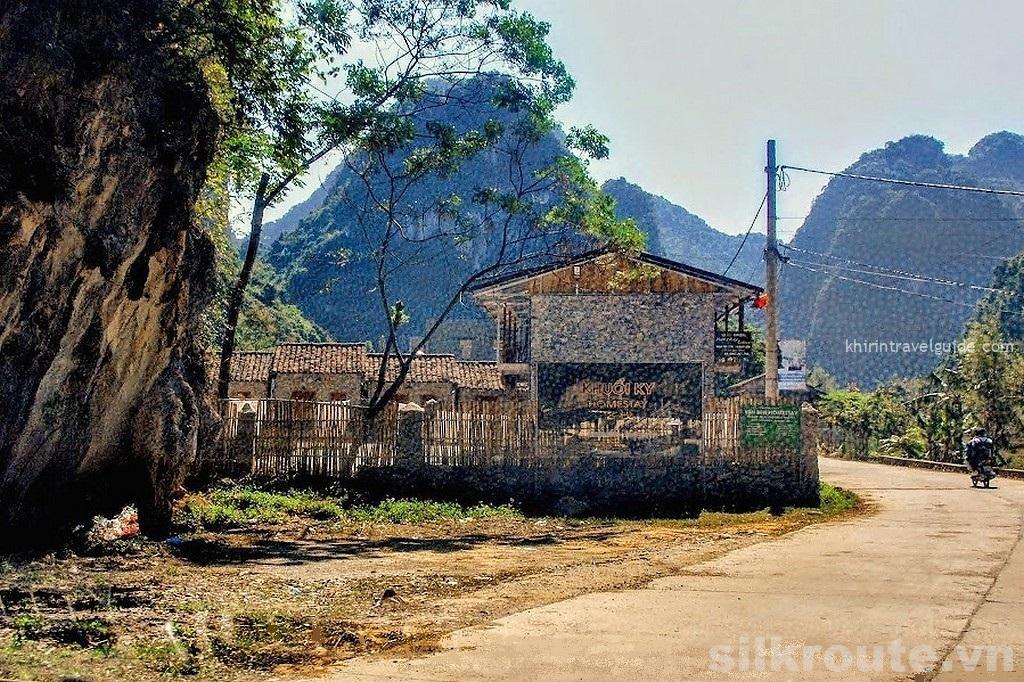
Khuoi Ky is a small village of the ethnic Tay, in which a number of old houses built with stone in traditional technique are preseved. The village is located right on the path going to Nguom Ngao Cave which is accessed by turning off from the main road and going in for half a kilometer.
ĐT






